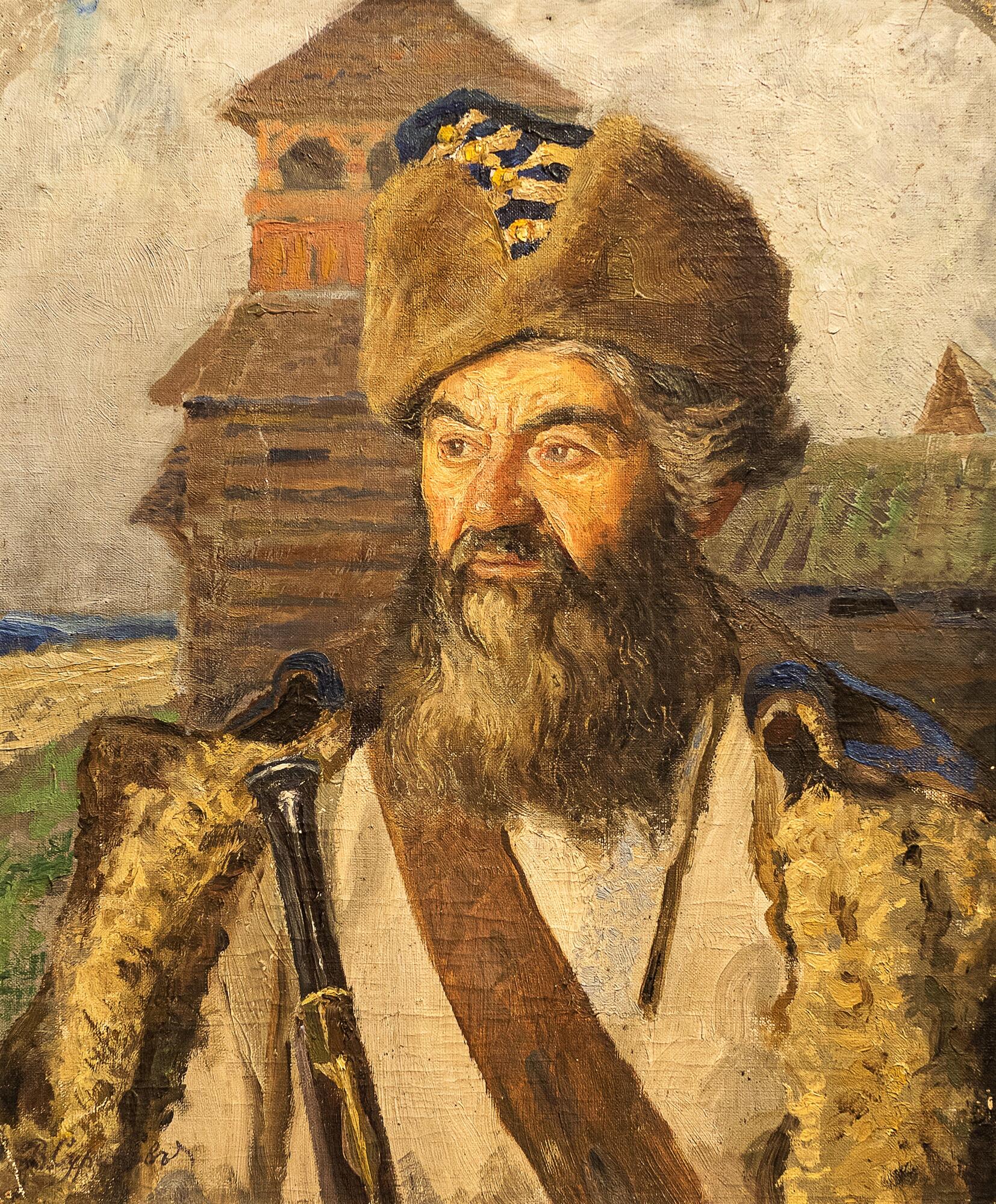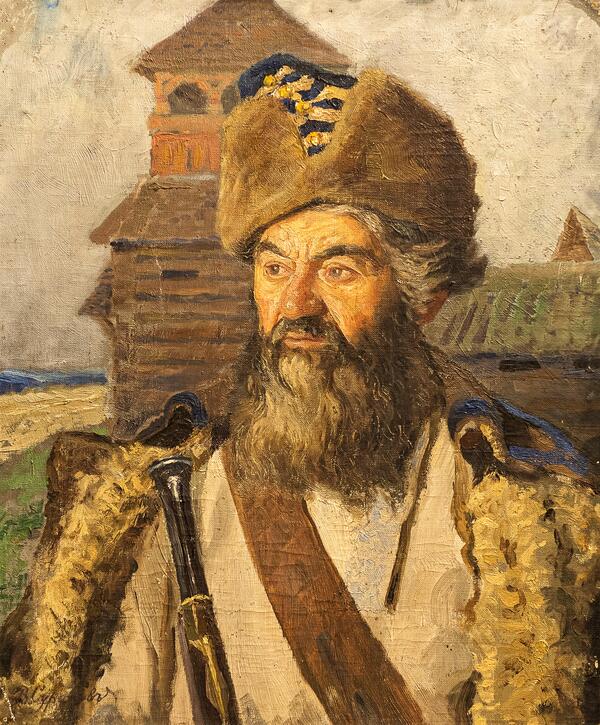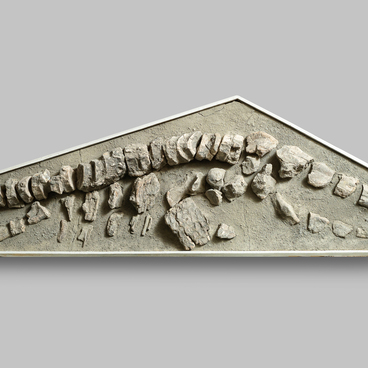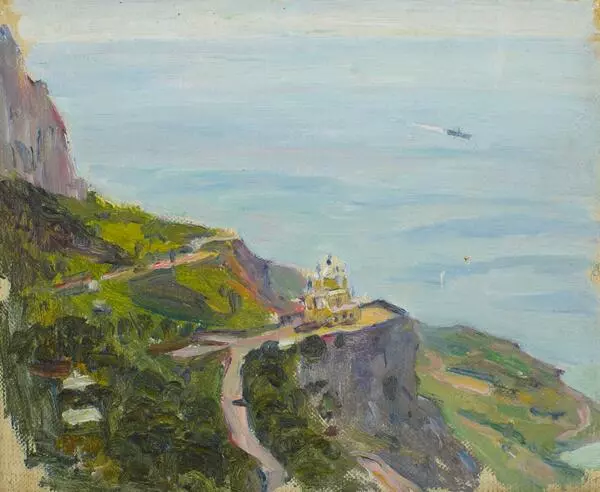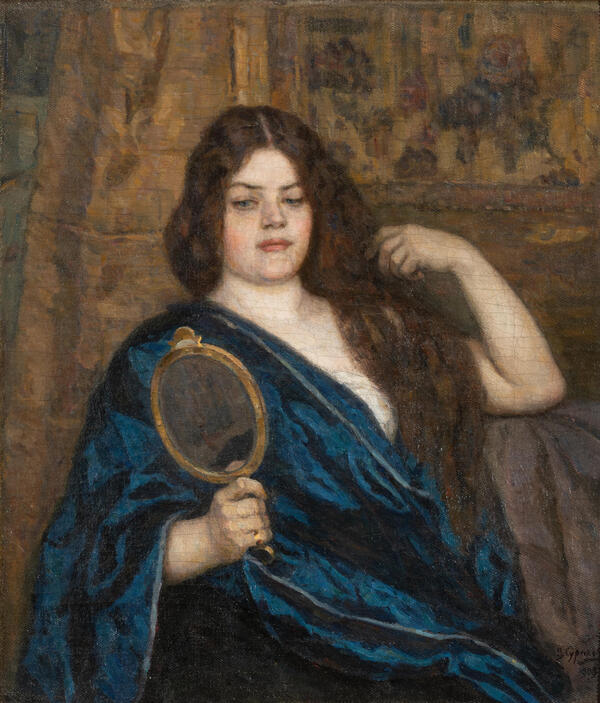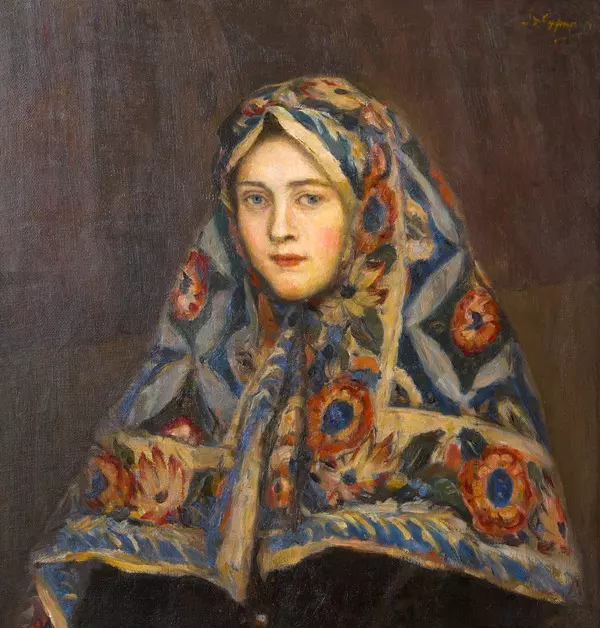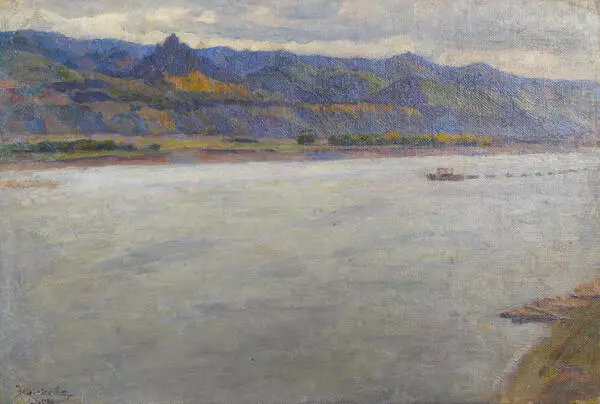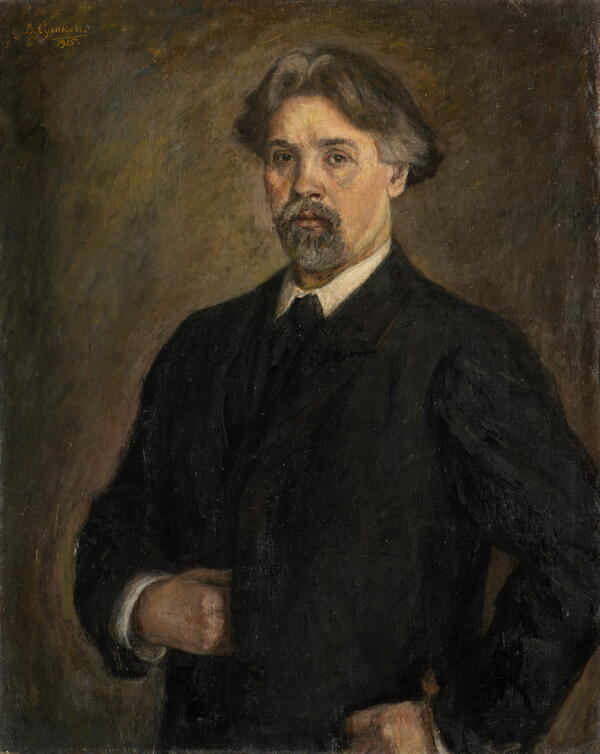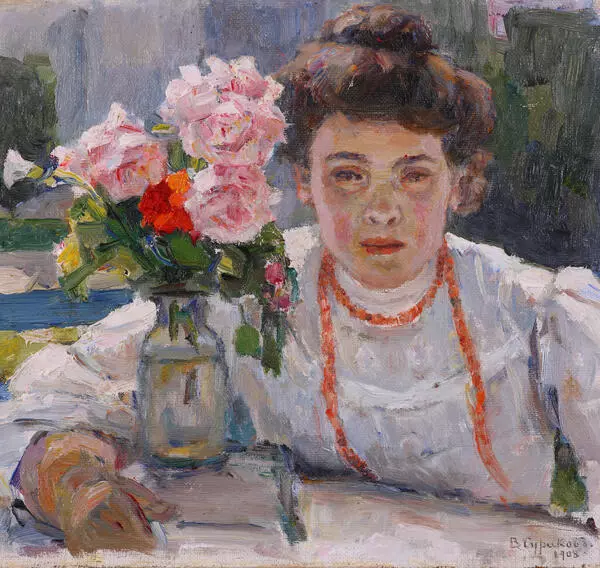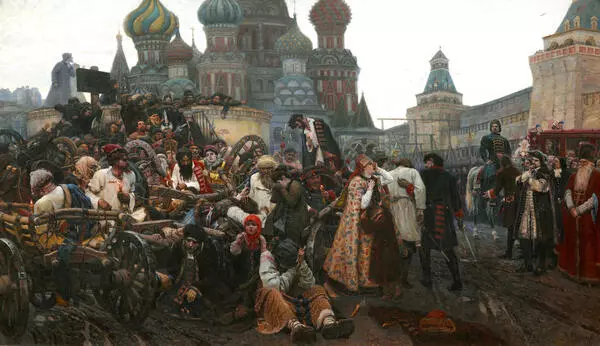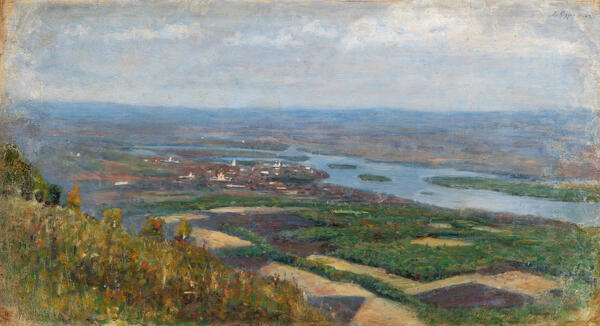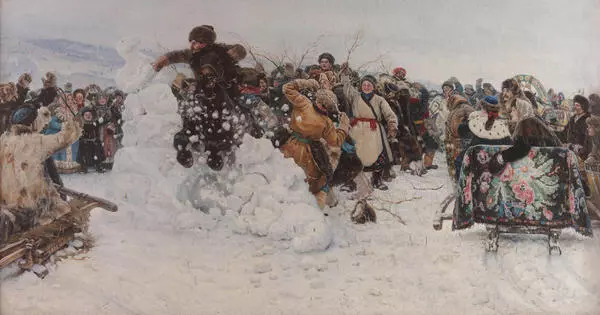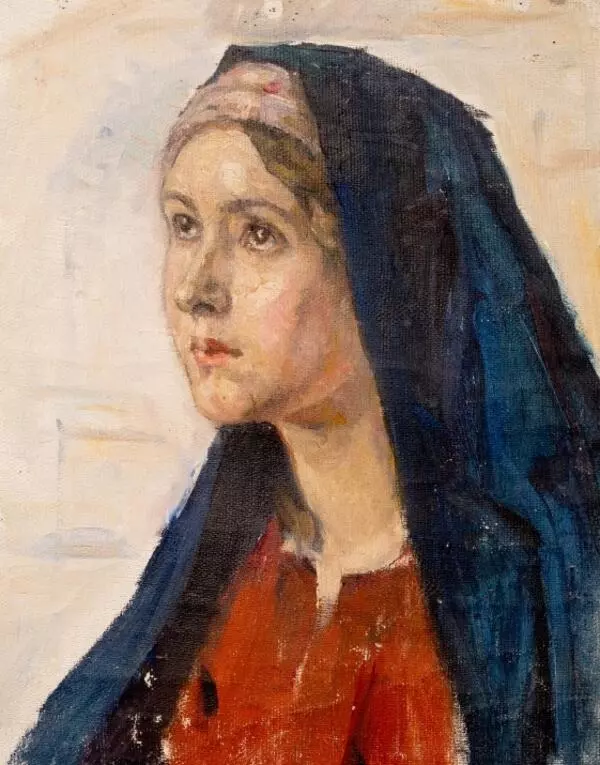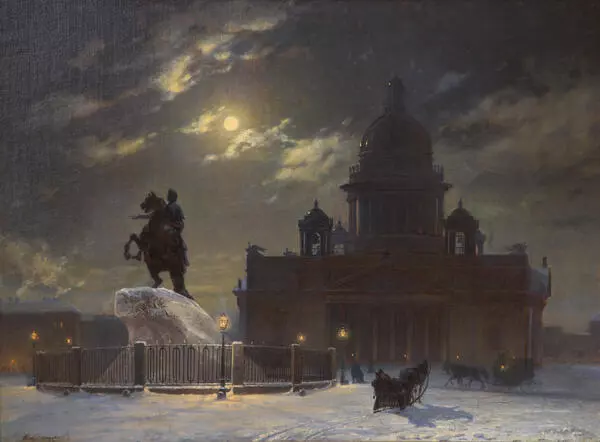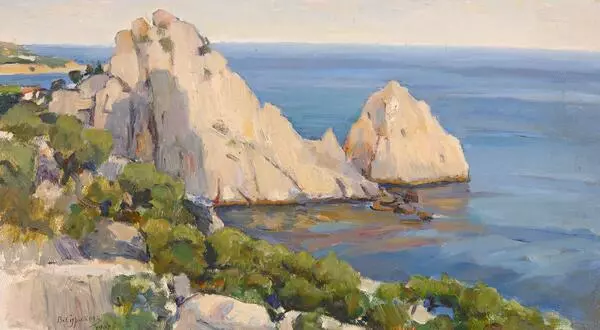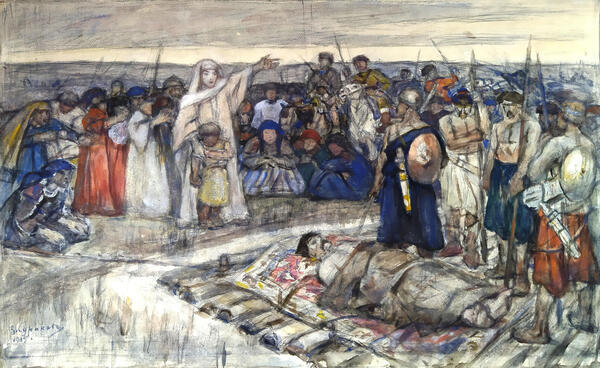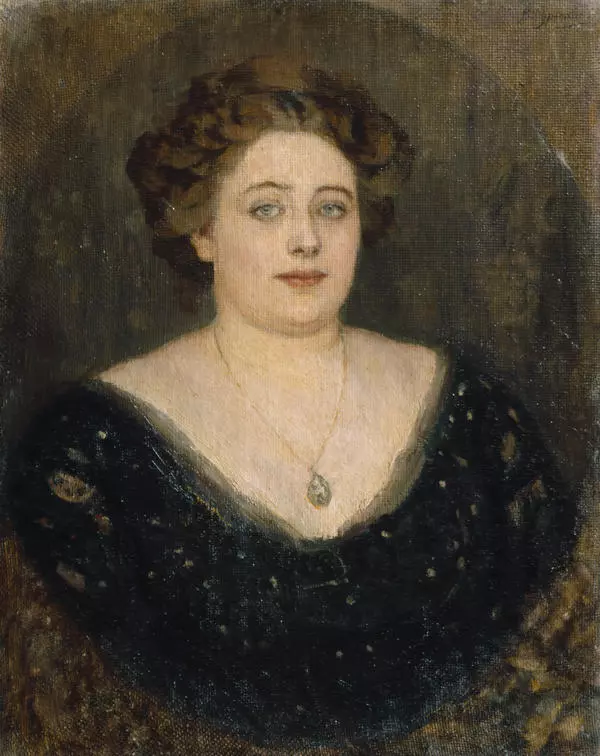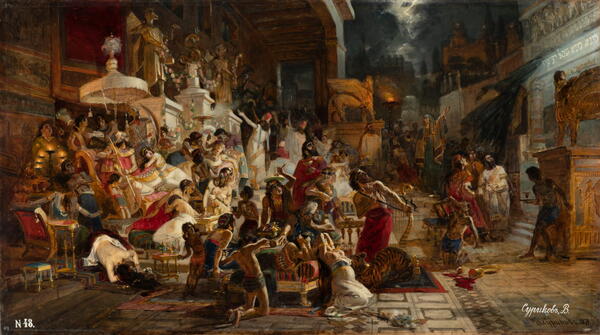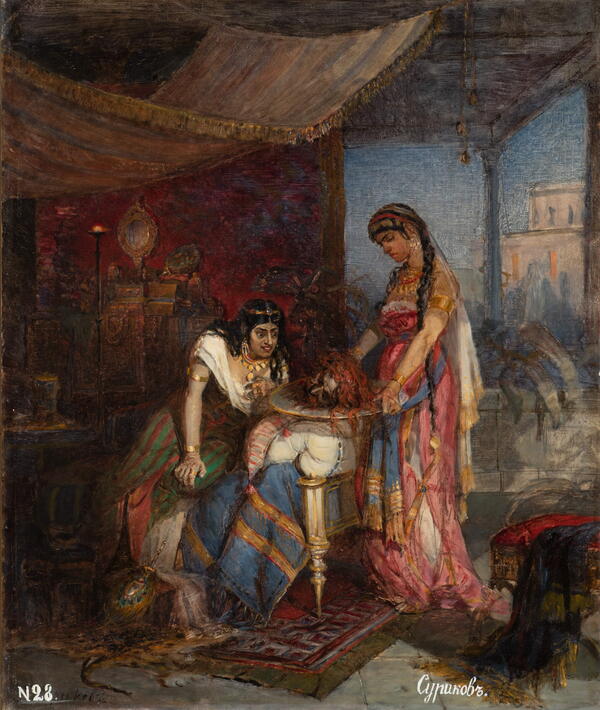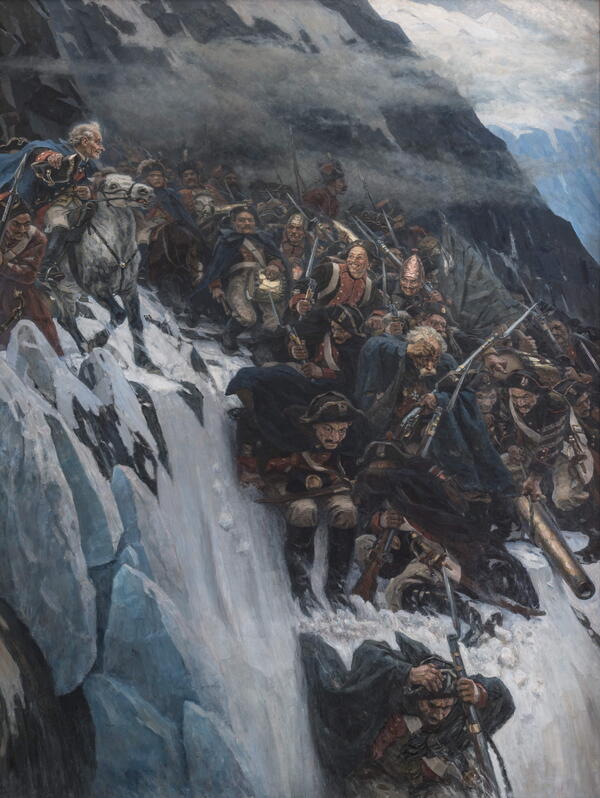The study ‘Strelets’ was created by artist Vasily Surikov in the late 19th century. He depicted an aged strelets in an embroidered hat and an unbuttoned sheepskin coat showing his chest. The character is dressed in a white linen shirt and a broad band with a musket hanging on his shoulder.
Streltsy (Russian firearm infantry) were elected servicemen who were members of the state army and had firearms. Most often they were infantrymen, less often horsemen. This was the first regular army of the Russian state, which operated from the 16th to the early 18th century. The first streltsy unit was established by Ivan the Terrible in 1550.
Streltsу were divided into stremyanniye (or mounted) — the so-called special guards of the Tsar, vyborniye (later of Moscow), and gorodskiye (or municipal). They served in garrisons of border towns and slobodas (large villages inhabited by free peasants).
Streltsy were recruited from free men of the taxed classes. The sons of streltsy units were also inducted into the service, which gradually turned into a hereditary obligation. The streltsy were abolished by Peter the Great in the 1720s.
The artist Vasily Surikov was born in January 1848 in Krasnoyarsk. His ancestors came to Siberia with Yermak from the Don in the 16th century. The artist was proud of his ancestry and used to say, ‘I am a native Cossack in all respects… My Cossackdom is over 200 years old.’
In 1858, Surikov entered a district school, but he could not continue his studies, as after his father’s death the family could not afford it. The young man became a clerk in the Yenisey provincial administration. There, Governor Pavel Zamyatin noticed his drawings and arranged for a patron of the arts, the Krasnoyarsk owner of gold mines called Pyotr Kuznetsov, to pay Surikov’s tuition at the Academy of Arts.
In August 1869, Surikov was admitted to the Academy as a non-matriculated student and a year later enrolled in Pavel Chistyakov’s class. In November 1875, Vasily Surikov graduated from the Saint Petersburg Academy of Arts and received the title of a first-degree classed artist. In 1877, he moved to Moscow, where he worked on four frescoes for the Cathedral of Christ the Savior. In 1878, he married Elisabeth Charais. They had two daughters, Olga and Elena. The same year the artist began working on the famous picture “The Morning of the Streltsy Execution”.
In 1881, Surikov joined the Peredvizhniki — an artists’ cooperative group. In 1887, he completed one of his most famous paintings called ‘Boyarina Morozova’. In April 1888, Surikov’s wife passed away. The artist and his daughters left for Krasnoyarsk. There he created “The Capture of Snow Town”. He received a personal medal for this work at the 1900 Paris Exposition.
In 1893, Surikov became a full member of the St. Petersburg Academy of Arts. In 1907, he left the Peredvizhniki group and became a member of the Union of Russian Artists.
Vasily Surikov died in Moscow in March 1916. The artist was buried at the Vagankovo Cemetery next to his wife. The Moscow State Academic Institute of Arts was named after him, and an estate museum was opened in his honor in Krasnoyarsk, the artist’s birthplace.
Streltsy (Russian firearm infantry) were elected servicemen who were members of the state army and had firearms. Most often they were infantrymen, less often horsemen. This was the first regular army of the Russian state, which operated from the 16th to the early 18th century. The first streltsy unit was established by Ivan the Terrible in 1550.
Streltsу were divided into stremyanniye (or mounted) — the so-called special guards of the Tsar, vyborniye (later of Moscow), and gorodskiye (or municipal). They served in garrisons of border towns and slobodas (large villages inhabited by free peasants).
Streltsy were recruited from free men of the taxed classes. The sons of streltsy units were also inducted into the service, which gradually turned into a hereditary obligation. The streltsy were abolished by Peter the Great in the 1720s.
The artist Vasily Surikov was born in January 1848 in Krasnoyarsk. His ancestors came to Siberia with Yermak from the Don in the 16th century. The artist was proud of his ancestry and used to say, ‘I am a native Cossack in all respects… My Cossackdom is over 200 years old.’
In 1858, Surikov entered a district school, but he could not continue his studies, as after his father’s death the family could not afford it. The young man became a clerk in the Yenisey provincial administration. There, Governor Pavel Zamyatin noticed his drawings and arranged for a patron of the arts, the Krasnoyarsk owner of gold mines called Pyotr Kuznetsov, to pay Surikov’s tuition at the Academy of Arts.
In August 1869, Surikov was admitted to the Academy as a non-matriculated student and a year later enrolled in Pavel Chistyakov’s class. In November 1875, Vasily Surikov graduated from the Saint Petersburg Academy of Arts and received the title of a first-degree classed artist. In 1877, he moved to Moscow, where he worked on four frescoes for the Cathedral of Christ the Savior. In 1878, he married Elisabeth Charais. They had two daughters, Olga and Elena. The same year the artist began working on the famous picture “The Morning of the Streltsy Execution”.
In 1881, Surikov joined the Peredvizhniki — an artists’ cooperative group. In 1887, he completed one of his most famous paintings called ‘Boyarina Morozova’. In April 1888, Surikov’s wife passed away. The artist and his daughters left for Krasnoyarsk. There he created “The Capture of Snow Town”. He received a personal medal for this work at the 1900 Paris Exposition.
In 1893, Surikov became a full member of the St. Petersburg Academy of Arts. In 1907, he left the Peredvizhniki group and became a member of the Union of Russian Artists.
Vasily Surikov died in Moscow in March 1916. The artist was buried at the Vagankovo Cemetery next to his wife. The Moscow State Academic Institute of Arts was named after him, and an estate museum was opened in his honor in Krasnoyarsk, the artist’s birthplace.
